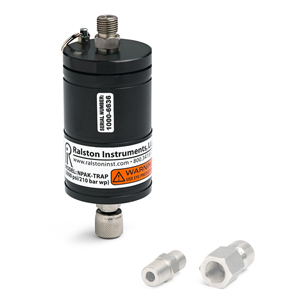
Liquid Contaminants – Fluid Trap
A Fluid Trap is the best way to control liquid contamination in your gas calibration system. This design uses a siphon to force the liquid out of the gas and collects it in a chamber for easy removal after the system is depressurized.
A Fluid Trap that is rated to 3000 psi (210 bar) helps to seperate out moisture as well as providing a volume that will collect any unwanted liquids. A Fluid Trap that has a quick-connect lid that can be easily emptied so the user will never have to worry about getting liquids in their pressure calibration device again.
